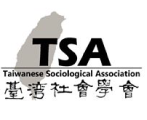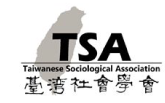場次簡介/ Description:
本自組場次的主題是「台灣的社會團結經濟運動」,這是延續2022年台灣社會學年學會「社會團結經濟場次」的努力,透過處理不同主題的幾篇文章,繪製台灣社會團結經濟運動的軌跡、刻劃其特殊性,並參與其願景共構。
本主題場次共有六篇文章,分成兩個子場次。第一個子場次,周睦怡的Initiating social and solidarity economy in Taiwan: from the perspective of university-community partnership research探討各種大學社會實踐計畫透過大學-社區夥伴關係,如何促發社區的願景共構;余思賢和洪敬舒的The Economic and Social Development beyond the Social Work Practice with the Homeless: A Case Study of Wanderers’ Table以浪人食堂為例,檢視有些新興的「發展性社會工作」(developmental social work, DSW)方法如何被應用在無家者的社會服務工作上,及其與社會團結經濟的重要關聯;黃盈豪的Care and Revitalisation of Tribal Communities: Dialogues between Productive Aging and the Solidarity Economy試圖從文健站專管中心的視角,依據輔導訪視經驗與文健站前線經驗作為分析資料,觀察文健站除了主流長照相關服務的推動,如何面對部落照顧服務永續性的議題,是否有發展出另類的服務模式及其他抵殖民在地經驗,聚焦在「生產性老化」和「團結經濟」的概念,發掘文健站照顧服務結合部落產業或長者社會參與及經濟活動的在地經驗,推展「照顧創生」的可能性。
第二個子場次,許甘霖的Crafting synergistic embeddedness for sustainability: Lesson from Carpenter’s House Thrift Shop以木匠的家公益二手店為例,透過其鑲嵌性營運模式的分析,探討木匠的家公益二手店如何透過創造各種社會交往關係而非規模經濟或範疇經濟取得成本優勢,他將這種營運策略稱為「綜效性鑲嵌」,認為對社會團結經濟事業有重要參考價值;房思宏的Innovative Time Banking Practices in Taiwan: Implications to SSE透過兩個時間銀行的案例,檢視這兩個時間銀行的機制如何重視參與者的價值並致力以創新方式滿足社區的多元需求,具有發展出社會團結經濟的潛能;李俐慧的Designing for homelessness beyond shelter: Assembling fragmented forms of life是對一個大學工業設計學系設計實作課程的一個社會設計專案執行及設計提案內容的反思。該專案在課程中引入街友的議題,讓學生透過文獻閱讀與實地田野調查的歷程,引導學生發展出一些可以對街友提供行動棲身相關支援功能的可實踐設計。學生最終提出的六個設計提案卻超越了課題原本的限定,揭示了街友棲身問題的多重面向。
這六篇文章預計以英文撰寫但以中文報告,六位將互為與談人。
| 場次一(主持人:許甘霖) | |
| 發表人 | 與談人 |
| Initiating social and solidarity economy in Taiwan: from the perspective of university-community partnership research 周睦怡(海洋大學海洋觀光管理學士學位學程) |
房思宏 |
| The Economic and Social Development beyond the Social Work Practice with the Homeless: A Case Study of Wanderers’ Table 余思賢(東吳社工系)、洪敬舒(社會團結經濟研究室) |
許甘霖 |
| Care and Revitalisation of Tribal Communities: Dialogues between Productive Aging and the Solidarity Economy 黃盈豪(東華大學民族事務與發展學系/民族社會工作學士學位學程) |
李俐慧 |
| 場次二(主持人 周睦怡) | |
| 發表人 | 與談人 |
| Crafting synergistic embeddedness for sustainability: Lesson from Carpenter’s House Thrift Shop 許甘霖(東海大學社會系) |
周睦怡 |
| Innovative Time Banking Practices in Taiwan: Implications to SSE 房思宏(台灣大學創新設計學院) |
余思賢 |
| Designing for homelessness beyond shelter: Assembling fragmented forms of life 李俐慧(東海大學工業設計系) |
黃盈豪 |
發表人/ Presenter:Kanlin Hsu
題目/ Title:Crafting Synergistic Embeddedness for Sustainability: Lesson from a thrift shop
摘要/ Abstract:
Under the trend of building a social investment state in Taiwan’s context, a major challenge to charity organization has been how to transform from reliance on donation and subsidy into revenue for breakeven. The case of Carpenter’s House Thrift Shop offers valuable insights to social and solidarity economy. Though social and solidarity economy enterprises have been characteristic of more intensive and extensive embeddedness compared to for-profit enterprises, not all forms of embeddedness are proven to contribute to enterprise survival. Drawing on a Polanyian framework “embedded business model” which emphasizes on diversity of motives, plurality of mode of integration, and versatility of institutional form in economic transaction, this paper argues that the relative success of Carpenter’s House could be attributed to a business strategy which might properly be called “synergistic embeddedness“. In the process of exploring paths for creating revenue and cost down, Carpenter’s House crafted various measures, including government commissioned project, industry-school cooperation, training and hiring People with Disabilities, religious volunteering and so forth, contributive to achieve both financial and social objectives. Synergistic embeddedness describes cost advantages that enterprises obtain due not to their scale or scope of operation but specific forms of sociation. The author concludes that successfully crafting synergistic embeddedness might be crucial for the survival of social and solidarity economy enterprises.
Keywords: embeddedness, social enterprise, social and solidarity economy, social investment state, thrift shop
發表人/ Presenter:Szu-hung Fang
題目/Title:Innovative Time Banking Practices in Taiwan: Implications to SSE
摘要/Abstract:
Time bank/time banking is a mechanism in which various services are exchanged without the use of money. Theoretically, it can enhance reciprocity and cohesion in a community and it can also raise participants’ self-esteem and social capital. Nevertheless, it also faces many challenges to promote time banking in Taiwan after nearly three decades. This study focuses on time banking, the social and solidarity economy, and the relationship between the two. The two case studies dealt with in this paper, one in Keelung and one in Kaohsiung, were conducted by the author in the course of different research projects over the past few years. The author had an in-depth understanding of how the initiators of these two cases promoted their time banking projects and the challenges they face through semi-structured interviews. The author found out that initiators in both cases have done comprehensive studies on the core needs of each community, and have developed innovative measures to promote time banking and fulfill community needs. Although both cases do not identify themselves as a social and solidarity economy, their practices have elaborated alternative ways in which the role of the monetary system and the relationship between individual and community are critically reflected. This study suggests that a time banking mechanism that takes each participant’s value into account and seeks plural and alternative ways to fulfill community needs has the potential to develop a social and solidarity economy.
Keywords: Time banking, alternative economy, reciprocity, community
發表人/ Presenter:Li-hui Lee
題目/Title:Designing for homelessness beyond shelter: Assembling fragmented forms of life
摘要/Abstract:
This article reflects on a social design project conducted in the Industrial Design Department of a university. The project involved third-year students in the "Product Development" course, who addressed the issue of homelessness through literature review and field investigations. They aimed to develop practical designs for the homeless population. Initially focused on a "Mobile Sheltering Vehicle," the students' six design proposals went beyond the initial scope, exploring various aspects such as food, clothing, shelter, public communication, empowerment, and social participation for the homeless. The article examines the social implications and significance of these "social designs," providing progressive insights into understanding homelessness. It reviews the project's objectives, execution process, and analyzes students' design thinking and responses. Ultimately, the study offers recommendations for future urban space design and public policies concerning homelessness.
Keywords: social design, homeless population, forms of life, urban space design


